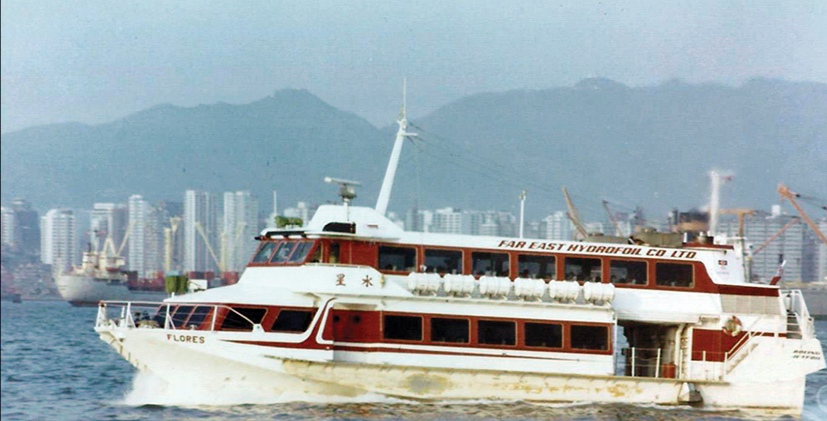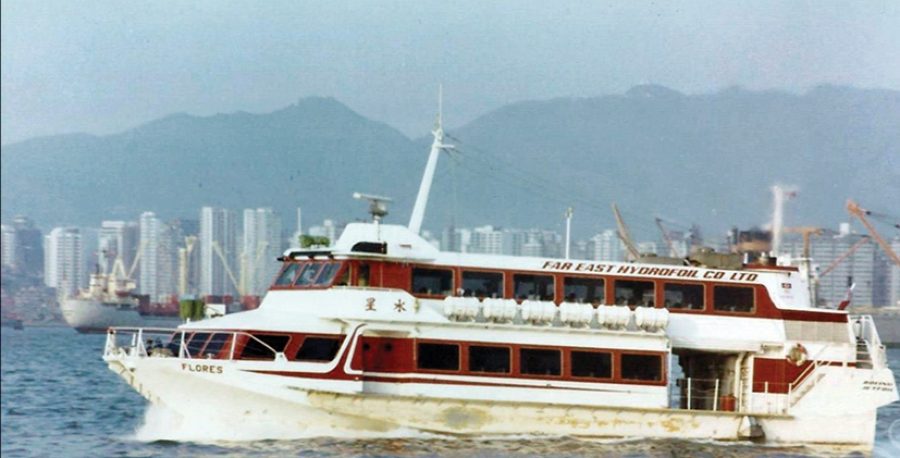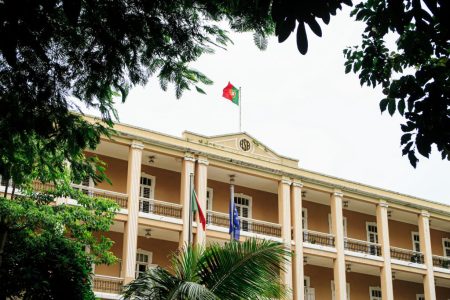The Jetfoil Conservation Concern Group worries that the world’s first jetfoil “Flores”, which is owned by TurboJET, will be dismantled within this week, group member Anderson Cheong Pak Chang told the Macau Post Daily on Tuesday in an online interview.
Cheong noted that the Flores jetfoil was a result of a commercial plan by Boeing for military hydrofoils in 1972. Cheong added that the ship uses a military fully submerged foil design that allows the vessel to travel above the surface of the water to avoid waves and turbulences that create seasickness.
“It was widely believed that it was Dr Stanley Ho who insisted on purchasing the jetfoil fleet despite the high price and high operational costs. The idea was that a fast and comfortable ride between Hong Kong and Macao would attract people to visit Macao as they wouldn’t suffer from seasickness. The costs can be offset by gambling income as a result of more tourists. It was widely known that Dr Ho really loved the fleet. He often chose jetfoils over the faster helicopters. He once got a birthday cake in the shape of a Jetfoil,” Cheong said. Cheong said that the jetfoil fleet was purchased around 1974.
Cheong also said that the Flores started serving TurboJET users from 1978 until 2008, adding that it retired after 30 years of service to a Hong Kong shipyard named Ocean.
According to Cheong, in August people started a rumour saying that two retired jetfoils – the Balsa and the Flores – were up for sale for a total price of HK$700,000, which stirred up “a heated discussion” on Facebook, but TurboJET denied the rumour. However, Cheong added, on 29 September, a video online showed that the Balsa, which had served TurboJET since 1994, was being scrapped in Wang Tak, another shipyard in Hong Kong.
“We did not expect Balsa to be scrapped because since the 1950s or the 60s, Hong Kong has not been scrapping ships. It was only back then when Hong Kong used to have a business scrapping military ships from Britain,” Cheong said.
Cheong pointed out that last Friday, the concern group noticed that the Flores was moved to Wang Tak, the shipyard where the Balsa had been scrapped. He said that his group was worried that the Flores would face the same ill-fate as the Balsa, hence the group has been contacting the media about the matter.
“This is an urgent matter because Flores can be scrapped within a week,” Cheong told the Macau Post Daily. He said that at the moment, the group members were only asking TurboJET not to scrap the historic vessel. He also provided a few suggestions to what TurboJET could do with the jetfoil.
Cheong said that in Seattle, Boeing has a museum where it keeps its first Boeing 747 aircraft, adding that in London and Japan there are two successful ship museums for British and Japanese vessels respectively. He also said that in Hong Kong there are two or three ships preserved in parks, pointing out that there are many methods to preserve the Flores.
The beauty of the vessel
According to Cheong, his group was founded in August when the rumour that the two ageing jetfoils were up for sale first surfaced. He noted that there are 10 members and over 1,711 followers on Facebook.
“I was pleased to see that there were so many people that cared for the vessel as much as I do,” Cheong said.
When asked what the jetfoil means to him, he started recalling his fond memories of the vessel. Cheong said that he was born and raised in Macao, and much like other Macao people he often travelled between the two cities. He said when he was little the Chinese name (噴射水翼船 which directly translates as “shooting water wing ship”) of jetfoils drew his attention
“When I returned to Macao after studying elsewhere, I started to realise the beauty of the Flores. Externally, when it is operating, it looks like as if the vessel is flying beautifully across the water and leaves a white trace behind,” Cheong said. He added that he was also fascinated by the history behind the ship.
Cheong said that the Flores represented a collective memory, adding that he enjoyed his rides because they were comfortable and seasick-free.
The Flores was named for the “Ilha das Flores (“Island of Flowers”) in Portugal’s Atlantic Azores archipelago.
(The Macau Post Daily/Macau News)
PHOTO © Jetfoil Conservation Concern Group






